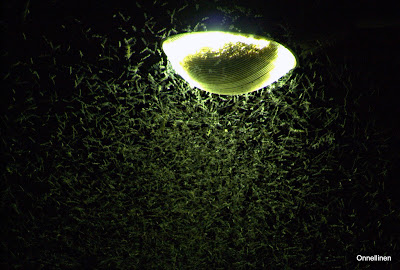The final destination for the day was Shimanto River (四万十川). It's said to be one of the purest and most beautiful natural rivers in all of Japan. The name composes of characters that literally mean "forty-thousand and ten rivers", which to my guess, is the number of tributary rivers that run to the main stream. The reason why Shimanto River is regarded special is because, unlike most major rivers, it is just about free of concrete dams, and therefore it serves as a habitat for various species including freshwater crabs, black eels and ayus (sweetfishes).
On the way there it was a must to pull out at several picturesque spots dotted along the southern coast of Shikoku. One of them was Cape Ahizuri, at the most southern tip of Shikoku. It's a place where waves of the North Pacific Ocean clash to the rugged bluffs that tower dozens of meters up directly from the sea.
Shikoku Pilgrimage. Have you ever heard of Shikoku Pilgrimage? In a nutshell, it is a course that circulates all the 88 Buddhist temples in Shikoku. When completed, one has also gone around the whole island. The loop is approximately 1,200 km (746 mi) long and takes anything between 4 to 8 weeks to get through. Many people do it to find them selves, some do it for religious reasons, some to enjoy the stunning scenes of Shikoku, and some to escape their situation in life. All the same, is a very demanding course, or what do you think about walking in pouring rain for one week, and then under a piercing sunshine for another? People who embark on this journey have made a choice to leave their ordinary life and therefore they are well respected by townspeople.
For some unknown reason the whole idea intrigued me right after reading about it. At a quiet beach called Ooki we came across with a henro. Henro is a person on a pilgrimage. They typically wear white linen, a straw hat and a bamboo stick. But the fellow we met had a laundry day. He was 22 years old, and tramping just for the experience.
"I study in Vancouver Island, Canada but now it's summer break. In Canada, with all the wildlife and uninhabited areas, these kind of walks can be dangerous. So I decided to go around the 88 Shikoku temples," he explained.
"I've walked for about a month and made it to half way. But with all the walking my shoes wore out so yesterday I bought a new pair," he said pointing at the new sneakers.
After chattering for some time, we decided to run into the sea to get pounded by some grand waves. Later we wished him well and begun the drive towards Shimato River.
Reaching the campsite before the nightfall, it was still possible to enjoy the beauty of this sanctuary of nature. The following day was reserved for kayaking down the shallow stream so we ought to get some Zzz.
Several other tents stood at the campground. One of them was a tiny one-man's tent accompanied by a touring bike. As I admired this well equipped cycle and the micro light tent, the owner of the tent came to me and said, "You would never guess where I come from!" Well, I couldn't guess so he revealed he had pedaled all the way from Sapporo, Hokkaido. "I've been on the road since mid-June, which is about two months." His feet spoke the truth: with such a tan line obviously he had spent some time out.
Surprised from this we had a long conversation. He's plan was to cycle around the major Islands in Japan before returning home. As for his occupation he worked at a ski field, and being a skiing instructor allowed him to spend the summers travelling. With a cheerful voice and a big smile he said, "I'm only 60." That day he'd rode 150 km.
The sun finally sat and the day was over. In this remote valley, hemmed in by mountains and ran over by a serene river, the atmosphere was indescribable. As darkness took over, masses of mayflies rose up to the street lamps for a late-evening hodgepodge.
Dead before sunrise, the lifespan of an adult mayfly can vary from just 30 minutes to one day depending on the species. These insects, also called one–day flies, are born only for one single purpose - reproduction, which makes me wonder what other purposes we humans possess...







0 comments (click to write a comment):
Post a Comment